25 Important Introduction to Economics Questions and Answers [With PDF]
The 1st chapter of our economics learning course is “Introduction to Economics.” In this article, we’ll learn the 25 most important “introduction to economics” questions and their answers.
These simple questions and answers will help you quickly understand what economics is, how it changes, how important or necessary it is to study economics, economic principles, economic systems, and much more.
By reading this post, you can quickly prepare for economics courses as well as other competitive exams such as Vivas, job interviews, and school and college exams.
So let’s get started.
Introduction to Economics questions and answers
The 25 most important introduction to economics questions and answers are as follows:
Question 01: What is economics?
Answer: Economics is the study of how people act when they have unlimited wants and a limited number of resources that can be used.
Question 02: What is the primary goal of economics and what topics are covered?
Answer: The primary goal of the economy is to maximize human welfare.
Economics deals with how people earn money and spend it to meet various needs. Human needs are infinite, but the resources to meet those needs are very limited. So, economics talks about how to find a balance between an infinite lack of resources and limited resources that can be used in different ways.
Question 03: What is the brief history and evolution of economics?
Answer: The brief history of economics can be summarized as follows:
Economics was invented in Greece. The term “economics” comes from the Greek word “Oikonomia.” “Oikonomia” is Greek for “household management.”
Aristotle, the Greek philosopher, defined economics as the science of household management. So, economics started out as the study of how to run a household. It was the study of fundamental family problems and how to solve them.
But as society and civilization developed, people’s thoughts and actions moved outside of the home and became more widespread.
In the late eighteenth century, economics emerged as a distinct subject. In his 1776 book, “An Inquiry into the Nature and Causes of the Wealth of Nations,” economist Adam Smith referred to economics as the “science of wealth.”
His book is the bedrock of modern economics. Economic theory entered the modern era later in the nineteenth and twentieth centuries.
The Great Depression began in various European countries, including America, in 1930. These countries’ economies are being harmed as a result.
J.M. Keynes, the economist, appeared as a savior at this time. His economic reforms were critical to bringing the Great Depression to an end.
Economists such as James Tobin, Paul A . Samuelson, Jon Robinson, Milton Friedman, and Velfredo Pareto linked economic thinking with social welfare in the modern era. As a result, the economy has earned the term “welfare economy.”
Question 04: What is the importance of studying economics?
Answer: In today’s era, the need to study economics is increasing day by day. There is no limit to how important it is to study economics, not only to learn new things but also to solve problems in all areas of life. The importance and necessity of studying economics in modern society are discussed below.
- A man is faced with unlimited scarcity right from birth. But the resources to meet this infinite scarcity are limited. With these limited resources, knowledge of economics is essential to select the most important scarcity from among the infinite scarcity.
- Knowledge of economics is concerned with the economic development of a country. Economics is the study of money and banking, the growth of industry, the expansion of trade, transportation systems, transportation and communication systems, budgets, etc.
- Economics lessons teach about the fair use of resources. How a country’s limited resources will be used to maximize production, how much of a product should be produced, and how it will be distributed among the people. These problems can be solved by studying economics.
- Most countries in today’s world are trying to improve through proper planning for rapid economic development. To make and carry out economic plans that make the best use of a country’s resources, you need to understand economics.
- A country needs to know about international economics to benefit from international trade.
Question 05: What are the two major economic problems?
Answer: The two major economic problems are as follows:
- Scarcity and
- Unlimited wants
Question 06: What is the concept of scarcity and unlimited want?
Answer: The main problem with people is that they can’t get everything they want in proportion to how much they want it.
Resources are required to produce any good or service. However, “wealth is limited.” So, with limited money, you can only get a limited number of goods and services.
As a result, with limited wealth, all of man’s needs are not met. This is the source of scarcity. If there were fewer needs, scarcity would not have arisen.
Paul Samuelson, an economist, says that the question of how to best use scarce resources in society is a very important one.
The demand for natural resources such as sunlight and wind is extremely high. However, we do not have to spend any money to obtain these. These resources are rarely in short supply.
Because humans have too many wants and resources are limited, all human wants cannot be met with these limited resources.
Humans satisfy a few of their many desires. And they satisfy these desires based on their importance.
Humans prioritize satiating their most basic needs. This is known as “want selection.”
Question 07: are the ten principles of economics?
Answer: The following are the ten economic principles:
- People interact
- Taking one opportunity means giving up another opportunity
- Rational people think at the marginal level
- People respond to incentives
- Everyone benefits from trade
- The market system is a good way to organize economic activities
- Governments can sometimes promote market systems
- The standard of living of the people of a country depends on the ability of that country to produce goods and services
- When the government prints more money, the price of goods increases
- In society, there is a trade-off between inflation and unemployment in the short run
Question 08: What is an opportunity cost in economics?
Answer: Economists use the opportunity cost concept to reconcile resource scarcity and choice. Because of the scarcity of resources, people must make choices. When all of our infinite needs are not met, we have to choose alternatives.
In the case of infinite scarcity, to get one, one has to give up the other. This foregone opportunity is an opportunity cost.
Question 09: What is economic activity?
Human activities related to the production and consumption of goods or services are called economic activities. That is, work that involves income and expenditure is called “economic work.” These activities generate wealth and are included in national income.
Question 10: What are non-economic activities?
Answer: All the activities of people that are not related to financial income but from which people can get satisfaction are called non-economic activities.
These activities have no impact on national income. People do these things for a sense of social responsibility and peace of mind.
Question 11: What is the economic system?
Answer: The way a society coordinates the production, distribution, exchange, and use of resources, goods, and services is through its economic system.
Question 12: What are the various types of economic systems?
Answer: There are numerous economic systems in the world. Such as
- Capitalistic economy,
- Socialistic economy,
- Mixed economy, and
- Islamic economy.
Question 13: What is a capitalistic economy?
Answer: In a capitalist economy, each person or business has complete freedom over what they make, how they sell it, and what they buy.
Question 14: What are the characteristics of a capitalistic economy?
Answer: The following are the key characteristics of a capitalistic economy:
- In a capitalistic economic system, resources and the means of production are privately owned.
- Without any form of government regulation, individuals and institutions compete freely.
- Here, everyone has economic freedom. Owners of resources decide what, when, and how much to produce.
- In a capitalist economy, the price of a good or service is automatically set by how much demand there is for it.
- In a capitalistic economic system, income and wealth are distributed unequally. Individual wealth ownership results in an unequal distribution of wealth. In this case, the higher the income, the greater the wealth.
Question 15: What is a socialistic economy?
Answer: A socialistic economy is a type of directive economic system. This economy is the exact opposite of a capitalistic economy. A socialist or directive economy is one in which all resources and ways of making things are owned by the government and all economic activities are controlled by the central government.
Question 16: What are the characteristics of a socialistic economy?
Answer: The following are the key characteristics of a socialistic economy:
- One of the main features of a socialistic economy is state ownership of resources. In this type of economic system, resources and means of production are not privately owned. The government owns all resources.
- The central government is in charge of everything that has to do with the economy. This includes setting prices for goods and services, setting wages for workers, and planning production, distribution, and growth.
- A socialistic economy makes sure that everyone is as happy as possible by getting rid of differences in basic human rights like food, clothing, a place to live, an education, and medical care.
- The state determines how much of a product will be produced and who will consume how much of the product in this economic system.
- Since the government stays in charge under a socialistic economy and there is no price system, there is no inflation.
Question 17: What is the difference between capitalistic and socialistic economic systems?
Answer: The following are the three important differences between capitalistic and socialistic economic systems:
| Sl No | Capitalistic Economic System | Socialistic Economic System |
| 1 | A capitalist economy is one in which there are free markets and private property. That is, each person has complete freedom over how much wealth he or she owns, makes, shares uses, etc. | A socialistic economy is an economic system in which all resources and power are controlled by the state. That is, there is no private ownership and no individual freedom in production, distribution, consumption, etc. |
| 2 | A free market system exists in this economic system. The people own the means of production. Goods or services are produced and sold for a profit. | In this economic system, the means of production are owned by the state or central government. Here, economic activities are conducted with the aim of achieving social welfare. |
| 3 | Here there is an automatic market system or free competition. | There is no automatic market system or free competition. |
Question 18: What is a mixed economy?
Answer: A mixed economy is one that combines a capitalist and a socialist economy. That is, a mixed economy is an economic system in which both the automatic market system and the government control system are used.
In such an economic system, many economic decisions are made by individuals or firms through the market system. Again, the government also plays an important role in the distribution of wealth.
Question 19: What are the characteristics of a mixed economy?
Answer: The following are the key characteristics of a mixed economy:
- One of the characteristics of this economic system is that there is state ownership of assets as well as individual ownership.
- In a mixed economy, the private and public sectors coexist side by side.
- Here, economic planning is controlled by the central planning authority. However, the development plans of private entrepreneurs are coordinated with the state plans.
- In this economic system, the price system of the market economy is followed. That is, the price of goods or services is automatically determined by demand and supply. However, the government can regulate the price system for state needs.
- This economic system does not guarantee an equitable distribution of national income because private ownership exists.
Question 20: What is an Islamic economic system?
Answer: An Islamic economic system is established in the light of Shariah. The main sources of Shariah are the Quran and Sunnah. The financial system in which economic activities are conducted according to the rules of Allah and economic problems are solved in the light of the Quran and Sunnah is called the Islamic economic system.
Question 21: What are the characteristics of an Islamic economy?
Answer: The following are the key characteristics of an Islamic economy:
- The Islamic economic system is based on the idea that only God owns everything in the sky and on the ground. Man shall only use and safeguard resources in accordance with Allah’s instructions as his representative.
- In this economic system, more importance is given to halal and haram issues in terms of production, consumption, and exchange.
- Distribution plays a very important role in Islamic economics. Here, money is collected from the rich and distributed among the poor.
- In such a financial system, the government or any other single party cannot set and control prices. Prices are set automatically by how demand and supply from many buyers and sellers in the market work together.
Question 22: How many different types of agents are there in the economy?
Answer: There are two types of agents in a strong economy
- consumer or household and
- Producer or farm.
Question 23: What is microeconomics?
Answer: The branch of economics that deals with the decisions of individuals, families, or firms and explains how these behaviors or decisions interact in markets is called microeconomics. The scope of microeconomics is small.
Question 24: What is macroeconomics?
Answer: Macroeconomics is concerned with the overall economy, including national and global economies. For example, macroeconomics examines how an economy’s overall growth increases.
Macroeconomics studies economic variables in the context of the entire economy. In macroeconomics, we talk about things like the national income, the level of consumption, the level of prices, the level of wages, the unemployment rate, inflation, the level of employment, the budget, and so on.
Question 25: What are the differences between microeconomics and macroeconomics?
Answer: The following are the differences between microeconomics and macroeconomics:
| Sl No | Microeconomics | Macroeconomics |
| 1 | The branch of economics that analyzes the behavior of individuals, families, and firms is called microeconomics. | Macroeconomics is the part of economics that looks at how the whole economy works, both nationally and internationally. |
| 2 | A specific part of the economy falls under the scope of the private economy. | The entire economy is covered by macroeconomics. |
| 3 | In microeconomics, economic variables are analyzed in the light of a specific or limited scope such as prices of production materials (land, labor, capital, organization), the output of an individual or firm, etc. | In macroeconomics, variables are explained in light of the economy as a whole. Namely: employment level, price level, poverty, inflation, government monetary policy, etc. |
| 4 | Microeconomics does not show the overall economic condition of a country. | Macroeconomics refers to the overall economic condition of a country. |
I hope you have a good understanding of the “Introduction to Economics” chapter by the end of this post.
If you read these 25 important “Introduction to Economics” questions and answers on a regular basis, you will gain a better understanding of the “Introduction to Economics” chapter.
Don’t forget to leave a comment for us if you have any questions or if you would like to find out more information.
You can also read:

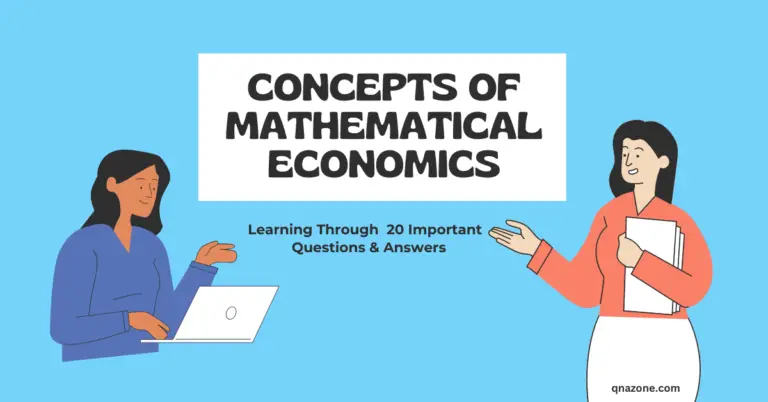
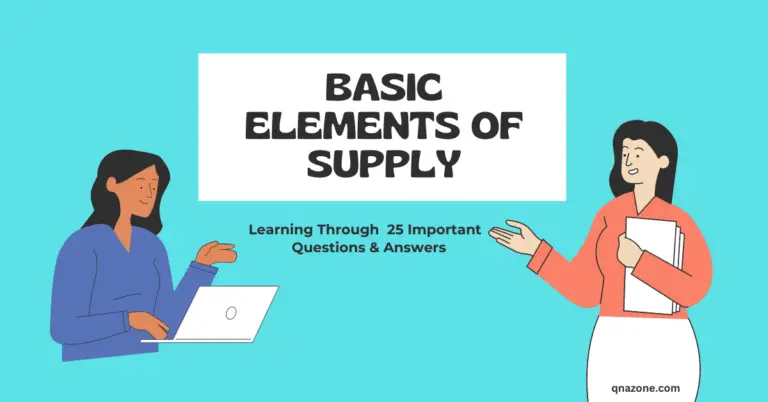
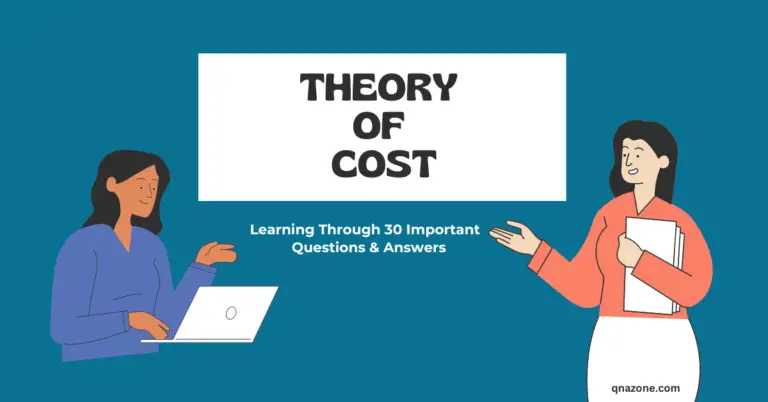
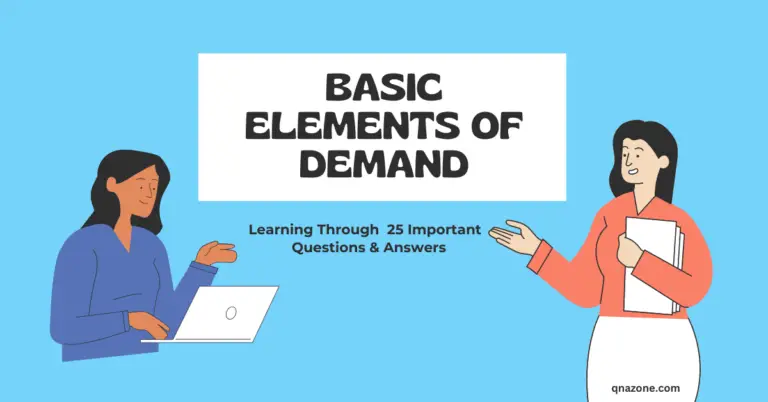
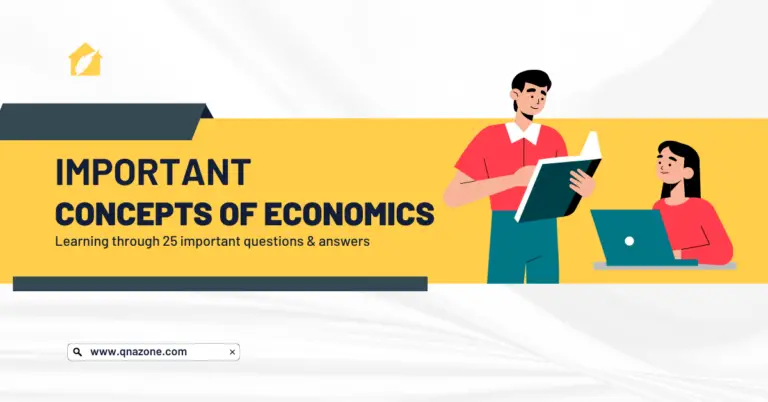

This was so useful for my term test. Thank u for uploading these kinds of questions and answers.